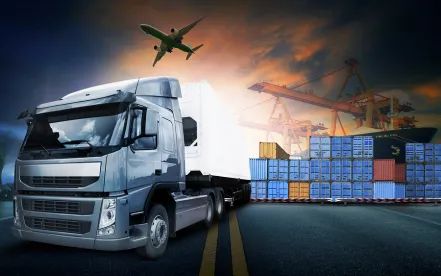On May 17, 2018, the European Commission released a legislative proposal for the first ever CO2 emissions standards for heavy duty vehicles in the European Union. The EU has no current limits on CO2 emissions from heavy duty trucks, which according to Reuters “make up a quarter of all road transport emissions while making up just 5 percent of vehicles on the road.”
The Commission proposed a two-step approach:
- in 2025, a mandatory reduction in CO2 emissions by 15% from 2019, and
- in 2030, a proposed reduction in CO2 emissions by 30% from 2019.
The original reductions would apply to large trucks, which according to the Commission account for 65% to 70% of all CO2 emissions from heavy-duty vehicles. The Commission would review the 2030 reduction target in 2022, and at that time, would also extend the scope to include small trucks, busses, coaches, and trailers.
To meet the standards, the proposal includes various methods of implementation. Manufacturers will work to meet the reductions through a combination of emissions reduction, emissions credits, and investment in innovative technologies. This includes:
- “Banking and borrowing to take account of long production cycles, including a reward for early action, while maintaining the environmental integrity of the targets.”
- “Full flexibility for manufacturers to balance emissions between the different groups of vehicles within their portfolio.”
- “Vocational vehicles, such as garbage trucks and construction vehicles, are exempted due to their limited potential for cost-efficient CO2”
The Commission included an incentive system which will “reward those manufacturers who will invest more in innovative technologies.”
The European Automobile Manufacturers’ Association (ACEA”) reacted to the proposal on Thursday. ACEA members include BMW, DAF, Daimler, FCA, Ford, Honda, Hyundai, Iveco, Jaguar Land Rover, PSA Groupe, Groupe Renault, Toyota, Volkswagen, and Volvo.
ACEA praised certain aspects of the proposal: a two-step approach to emissions, a uniform baseline (2019 emissions) and a uniform calculation tool (VECTO) to report CO2 emissions.
However, ACEA raised concerns about the Commission’s “aggressive” approach and the application of CO2 reduction levels from passenger vehicles to heavy duty vehicles. The ACEA secretary said this approach does not “fully recognis[e] the fundamental differences between these vehicle segments.” Further, the ACEA pushed back on the 2025 target, saying this is not realistic for vehicle development. ACEA had pushed for a 7 percent reduction by 2025 and a 16 percent reduction by 2030.
Other environmental groups said the proposed reductions do not go far enough. The organization Transport & Environment welcomed the proposal but said “the Commission’s plan falls short of the ambition demanded by hauliers and businesses and what’s needed to hit EU’s own climate goals”—namely, zero emissions from transportation by 2050.




 />i
/>i

